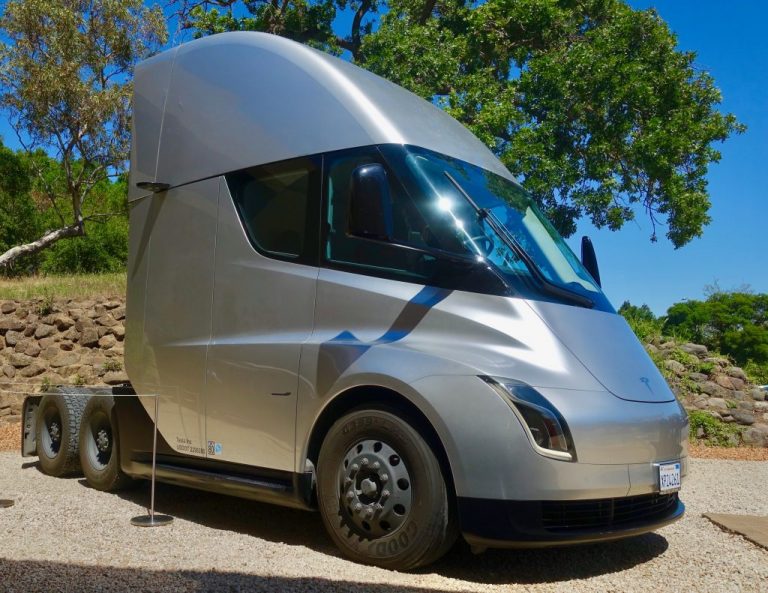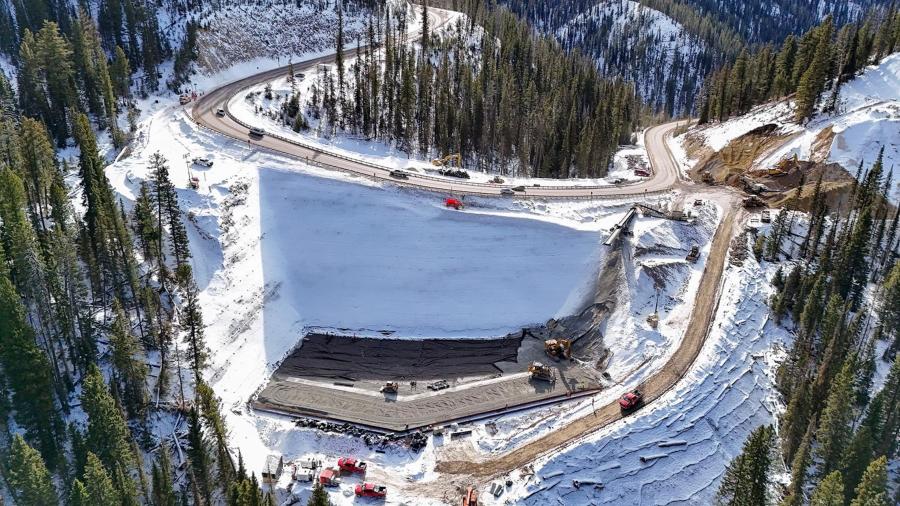The rumble of a heavy-duty truck on the open highway is a familiar sound, the lifeblood of modern commerce. For decades, these giants of the road have been piloted by skilled human drivers, moving trillions of dollars in goods across continents. Now, a profound transformation is underway, driven by advancements in artificial intelligence, sensor technology, and robotics. The era of the autonomous heavy vehicle is no longer a distant sci-fi concept; it’s a rapidly approaching reality. As technology outpaces policy, cities and nations are scrambling to create a new set of rules for this digital highway. The development of comprehensive regulatory frameworks is the critical next step, a complex but essential process that will determine the safety, efficiency, and economic impact of automated logistics for generations to come. This isn’t just a topic for logistics experts; it touches on everything from Smart City / Infrastructure AI Gadgets News to the fundamental principles of law and liability in an automated world.
The Technological Backbone of Autonomous Trucking
Before a single law can be written, it’s crucial to understand the sophisticated technology that allows a 40-ton vehicle to navigate complex environments without a human driver at the helm. Autonomous heavy vehicles are marvels of engineering, integrating a suite of advanced systems that work in concert to perceive, think, and act. This technological stack is the foundation upon which all regulatory and safety considerations are built.
The Perception Layer: The Senses of the Machine
An autonomous truck “sees” the world through a multi-modal sensory system far more comprehensive than human sight. This is a core topic often covered in AI-enabled Cameras & Vision News, but it goes much further in vehicles.
- LiDAR (Light Detection and Ranging): These sensors emit pulses of laser light to create a precise, 3D point-cloud map of the surrounding environment. This provides detailed information about the shape and distance of objects, regardless of lighting conditions.
- Radar: Using radio waves, radar excels at detecting the speed and distance of other objects, even in adverse weather like heavy rain, fog, or snow, where cameras and LiDAR might struggle. –
- High-Resolution Cameras: These are the “eyes” of the system, crucial for identifying road signs, traffic lights, lane markings, and classifying objects like pedestrians, cyclists, and other vehicles. The processing of this visual data is a key area of development reported in AI Cameras News.
The data from these disparate sources is fed into a process called “sensor fusion.” This is where the AI’s brain combines the strengths of each sensor type to create a single, unified, and highly reliable model of the world. The onboard computers processing this data are powerful systems, a prime example of topics discussed in AI Edge Devices News, as they must make critical decisions in milliseconds without relying on a cloud connection.
The Brains of the Operation: Decision-Making and Control
Once the vehicle has a clear picture of its surroundings, the AI software must decide what to do. This involves complex algorithms for path planning, prediction of other road users’ behavior, and control actuation (steering, braking, accelerating). This software is trained on millions of miles of real-world and simulated driving data, learning to handle a near-infinite number of scenarios. The constant learning and updating of these systems are a major focus of AI Research / Prototypes News. The vehicle’s ability to communicate with other vehicles (V2V) and infrastructure (V2I), a cornerstone of AI Sensors & IoT News, is also vital for coordinated and safe operation in dense traffic.
The Emerging Global Regulatory Patchwork
With the technology maturing, the focus has shifted to governance. Creating a legal framework for machines that make life-or-death decisions is a monumental task. Around the world, we see a variety of approaches emerging, creating a complex and sometimes contradictory patchwork of rules. This regulatory landscape is as important to the industry as the technology itself.
Proactive and Sandbox Approaches
Some regions, particularly those with a strong focus on becoming technology hubs, are taking a proactive stance. Cities like Dubai and Singapore are establishing comprehensive legal frameworks and “regulatory sandboxes.” These sandboxes are controlled environments—specific districts or routes—where companies can test their autonomous vehicles under real-world conditions with regulatory oversight. This approach allows for iterative policymaking, where rules are refined based on data and practical experience. This level of urban planning is a key theme in Smart City / Infrastructure AI Gadgets News, as it requires integrating digital and physical infrastructure.
Fragmented vs. Centralized Models
In the United States, regulation has been largely a state-level affair. States like Arizona, Texas, and Florida have created permissive environments to attract testing and development, while others, like California, have more stringent requirements. This creates a complex operational challenge for trucking companies, as a cross-country route could involve navigating half a dozen different legal regimes. In contrast, the European Union and China are working towards more centralized, top-down frameworks to ensure consistency and interoperability across their respective territories. These regulations cover everything from cybersecurity standards, a topic relevant to AI Security Gadgets News, to the ethical guidelines for the vehicle’s AI, a conversation that echoes in the development of AI Assistants News.
Key Pillars of an Autonomous Vehicle Framework
Regardless of the approach, all effective regulatory frameworks for autonomous heavy vehicles must address several critical pillars:
- Safety and Validation: Defining the standards for testing and certifying that a vehicle is safe for public roads. This includes specifying required redundancies, fail-safe mechanisms, and performance benchmarks.
- Liability and Insurance: Who is at fault in the event of an accident? The owner, the operator, the software developer, or the hardware manufacturer? Clear laws are needed to resolve these complex questions.
- Data and Privacy: Autonomous vehicles generate immense amounts of data. Regulations must govern how this data is collected, stored, shared, and protected, a concern shared across all connected devices, from AI Phone & Mobile Devices News to Health & BioAI Gadgets News.
- Cybersecurity: Protecting these connected vehicles from malicious attacks is paramount. Frameworks must mandate robust cybersecurity protocols to prevent remote hijacking or disruption.
Real-World Deployments and Economic Implications
The push for regulation is fueled by the immense potential of autonomous trucking. Early deployments and pilot programs are already demonstrating significant benefits across various sectors, promising to reshape the logistics industry and the broader economy.
Case Study 1: Hub-to-Hub Long-Haul Trucking

This is the most prominent use case. Companies like Aurora, TuSimple, and Waymo Via are running pilot programs where autonomous trucks handle the long, monotonous highway portions of a journey. A human driver takes over for the complex “last mile” navigation on surface streets.
- Efficiency: Trucks can operate nearly 24/7, stopping only for fuel and maintenance, dramatically reducing shipping times. This continuous operation could double asset utilization.
- Fuel Savings: The AI’s precise control over acceleration and braking, along with optimized routing, can reduce fuel consumption by 10% or more. This has huge implications, as discussed in AI for Energy / Utilities Gadgets News.
- Labor Solution: The industry faces a chronic shortage of long-haul drivers. Automation can fill this gap, allowing human drivers to focus on shorter, local routes that allow them to be home more often.
Case Study 2: Port and Logistics Hub Automation
Ports, distribution centers, and mining sites are controlled, predictable environments, making them ideal for early full automation. Autonomous terminal tractors are already being used to move shipping containers from ships to storage stacks. This application of specialized machines is a major topic in Robotics News. The precision and tireless operation of these vehicles increase throughput and safety in these hazardous environments. The same principles of automation are being explored in other sectors, from warehouse management with AI Personal Robots to automated farming, a field followed by AI Gardening / Farming Gadgets News.
Navigating the Roadblocks: Challenges and Best Practices
The path to widespread adoption is not without its obstacles. Successfully integrating autonomous heavy vehicles into our society requires addressing technical, social, and ethical challenges head-on.

Common Pitfalls and Challenges
- Public Perception and Trust: High-profile accidents, even if rare, can severely damage public trust. Gaining social acceptance is as important as perfecting the technology.
- Weather and Edge Cases: Handling extreme weather conditions like blizzards or navigating unpredictable situations like complex, unmarked construction zones remains a significant technical hurdle.
- Job Displacement: The potential impact on the millions of people employed in the trucking industry is a major socio-economic concern that requires proactive planning, including retraining programs and new job creation.
- Initial Cost: The sophisticated sensor suites and computing hardware make autonomous trucks significantly more expensive than their conventional counterparts, posing a barrier to entry for smaller operators.
Best Practices and Recommendations
For regulators and companies alike, a strategic approach is essential for navigating these challenges.
- Embrace Phased Deployment: Start with simpler, more controlled environments (like ports or dedicated highway corridors) and gradually expand as the technology proves its safety and reliability. –
- Foster Public-Private Partnerships: Close collaboration between tech companies, government bodies, and infrastructure planners is crucial for developing effective regulations and the necessary smart infrastructure.
- Prioritize Standardization: Governments and industry bodies must work together to create universal standards for communication protocols, data formats, and safety testing to ensure interoperability and a consistent safety bar.
- Invest in Workforce Transition: Proactive investment in education and retraining programs can help the existing workforce transition to new roles within the evolving logistics ecosystem, such as remote fleet managers, technicians, and AI supervisors. This mirrors trends in other industries, where AI Tools for Creators News highlights new roles emerging alongside automation.
The development journey also provides insights applicable to other AI-driven fields. The rigorous testing required for autonomous vehicles sets a high bar that could inform safety standards for everything from Drones & AI News to the development of consumer-facing AI Companion Devices News.
Conclusion: Charting the Course for an Automated Future
The rise of the autonomous heavy vehicle represents a pivotal moment in the history of transportation and logistics. The technology is no longer the primary bottleneck; the most significant challenge and opportunity now lie in the creation of intelligent, adaptive, and globally coherent regulatory frameworks. By learning from early deployments, fostering collaboration, and addressing the societal implications head-on, we can pave the way for a future where our highways are safer, our supply chains are more efficient, and our economies are more robust. The journey is complex, but the successful integration of these autonomous giants will be a testament to our ability to responsibly harness the transformative power of artificial intelligence, setting a precedent for countless other AI applications, from AI Sleep / Wellness Gadgets News to the future of AR/VR AI Gadgets News.










